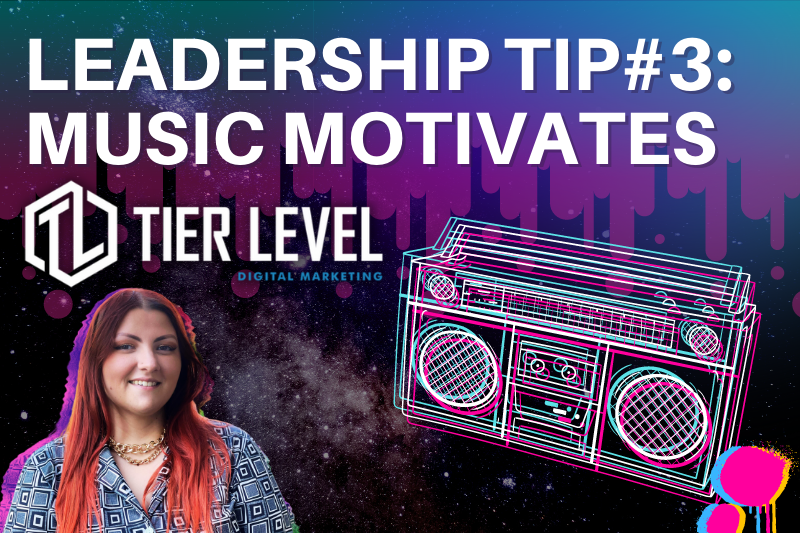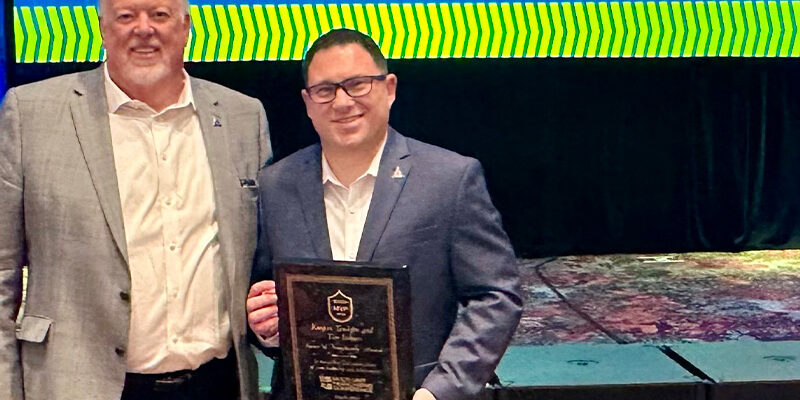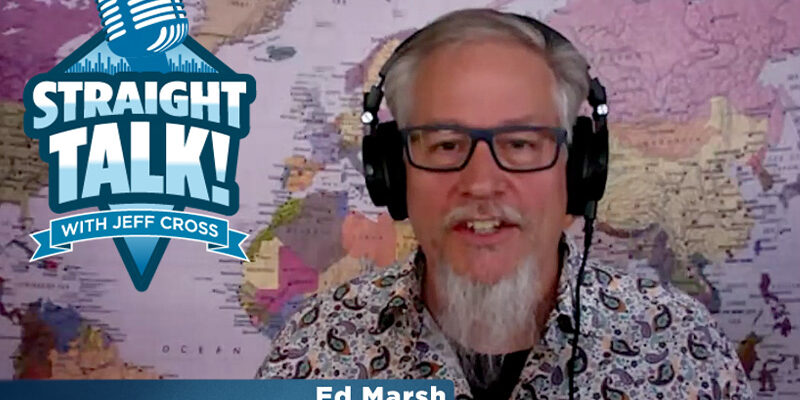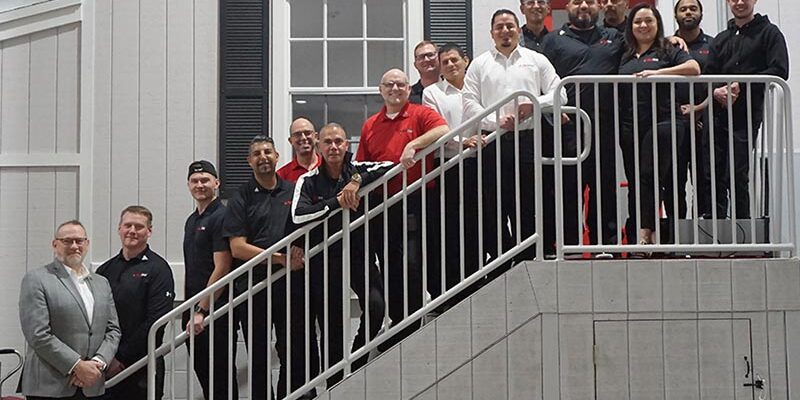Leadership Tips: Music Motivates and Empowers all

By Samantha Hager
Have you ever gone for a jog on a day you really weren’t feeling like running at all? Legs heavy, body stiff, and your mind swirling with excuses trying to justify you going home and not doing the workout—but then, you stick a headphone in your ear and your favorite song starts playing, and bam, off you go!
This is no coincidence. Multiple studies have shown that listening to your preferred motivational music can drastically improve your performance in physical feats including running, labor, and weight training. Some of the best athletes in the world attribute their successes both in training and on competition days to their playlists and actively share them online to encourage others.
Spotify playlists entitled “˜Workout Hard’ and “˜Motivational Gym Music’ are followed by thousands of users, and some sports like Football, Basketball, and even Wrestling have songs created specifically for entrances and half times to pump up the crowd and the players alike.
So, how does this musical magic actually work—and can it be applied to business and marketing too? This is what we’ve chosen to dive into in this week’s edition of “˜Leadership Tips’ alongside marketing geniuses, Tier Level Digital Marketing.
The psychological and empowering nature of music
Music is used to pump us up every single day. Don’t be fooled for a second into thinking that those cool car ads didn’t specifically select the heavy rock song or classical piano tune to evoke the emotions they want you to correlate with their brand.
In the same way, it’s no secret that the heavy metal playlists help to sell more copies of Doom and brands create their own catchy jingles so you don’t ever forget their name or slogan. Think about it, when you hear Kit Kat, aren’t you even slightly inclined to sing the “break me off a piece of that Kit Kit bar” song? Or, when you see a package of Meow Mix, don’t you start singing in your head “I want chicken, I want liver”¦” It’s all by design—and it’s scientifically sound too (pun intended)!
According to Anderson Music Therapy, “Music can activate multiple areas of the brain, like the auditory cortex, cerebellum, and the limbic system, all at the same time! Experts have studied this phenomenon by having accomplished musicians and rappers improvise on their instruments while lying down inside a functional MRI. Through these types of studies, we’ve learned not only that music is engaging multiple areas of the brain but it can be used to get the brain working more efficiently by strengthening neural pathways and even creating new motor pathways! For these reasons, music is effective in engaging our attention.”
Music therapy is actually one way that music can be used in a highly positive manner to help those with Autism, Alzheimer’s, and Dementia. As Northwestern Medicine explains, “Music evokes emotions and memories, which is why musical intervention has therapeutic benefits for people with dementia or Alzheimer’s disease. Musical interventions have been shown to decrease a patient’s agitation and improve communication and caregiver relationships.”
As people, we actually choose music that improves our mood as music activates areas in the brain that are tied to our emotions. A good song that we love triggers dopamine and other positive chemicals in our brain which motivate us, keep us happy, and improve our focus and productivity. Music also can challenge our minds as complex patterns and dissonant instruments encourage us to use our brains to find their roots and commonalities.
Furthermore, researchers found listening to slow music post-workout increases relaxation by lowering your heart rate and cortisol (your body’s stress hormone) levels back to normal faster.
But, one of the most interesting points that scientists discovered is that athletes and successful people tend to listen to key songs before every important event in their lives. These songs are thus attributed in their minds to their biggest successes and thus, they motivate the individual and help aid in their confidence. After all, if every time you flipped a coin, you won a million dollars, at some point you would start to truly believe the coin was they key and feel absolutely certain that flipping it would lead to another million, right? By doing this, you are quite literally manifesting success simply by believing it will happen if you listen to a certain song or playlist.
So, how can companies leverage all of this information to motivate their teams and increase their profits moving forward?
For this, we’ve worked alongside the marketing experts at Tier Level Digital Marketing to develop six tried and true music strategies that are sure to help liven up your brand and create a sense of harmony (pun intended again, of course) throughout your entire operation.
6 ways to leverage music to boost employee satisfaction and sales
For these strategies, we chose to stick with some of the best options according to other leaders in the industry and beyond that have found true success using them.
These strategies are sure to help you connect and empower your team, increase your productivity, and boost your sales and engagement with customers all through the simple power of good music and great playlists. Sounds pretty rockin’, doesn’t it?
1. Create playlists to empower your team
According to Inc., listening to certain types of music can help boost productivity and get your team to complete work faster and more efficiently. In fact, a good productivity playlist is something that many major brands actively leverage for their team members including KFC, Gymshark, American Eagle Outfitters, Google, Kia, and (obviously) Spotify.
So, what music should you include on your own business playlist, you may be wondering. Well, here are a few of the most scientifically proven productivity-boosting playlist types along with a few song recommendations for each:
Classical music
- Salzburg Symphony No. 1 (“˜Divertimento in D major’) ““ Mozart
- Canon in D ““ Pachelbel
- Gymnopédie No. 1 ““ Erik Satie
- Etudes ““ Chopin
- Moonlight Sonata (I) ““ Beethoven
Video game soundtracks
- Doom Eternal original soundtrack
- Kingdom Heart original soundtrack
- Legend of Zelda original soundtrack
- Final Fantasy original soundtrack
- Tony Hawk Pro Skater 4 soundtrack
- Fez original soundtrack
Nature sounds
All of these sounds were recommended by Spotify specifically.
- Ocean Waves
- Windy Day
- Rain in Nature
- Relaxing River
- Ambient Sea
- Gentle Waterfall
‘Pump up’ songs
- Seven Nation Army—The White Stripes
- Howlin’ for You—The Black Keys
- Crazy Train—Ozzy Osbourne
- DMX—Party Up (Up in Here)
- Immigrant Song—Led Zeppelin
- Stamina”“Vitalic
- GO OFF—Dillon Francis
- Red Rover—Little Stranger, JARV
- Weapon of Choice—Fatboy Slim
- Rock the House—Gorillaz
- Demolisher—Slaughter to Prevail
Instrumentals
- 1983—Stefano Guzzetti
- Nocturne—Christian Loffler
- As the Lights Fade Away—The Echelon Effect
- Glasgow Mega Snake—Mogwai
- Atoms—Ludovico Einaudi
- Tube Socks—Doubleclique
- All I Need—Clams Casino
White noise
- Here is a complete White Noise playlist by Spotify.
Old school hip hop
- Non Compos Mentis—Haiku D’etat
- Escargot—JARV
- Labor—Aesop Rock
- Mass Appeal—Gang Starr
- Ms. Jackson—Outkast
- Doo Wop (That Thing)—Ms. Lauryn Hill
- It Was a Good Day—Ice Cube
Jazz and dissonant tracks
- Overtime—Knower
- Matter—Nezumi Coo, Chloe Kibble
- Come on Talk—Bernhoft
- Slow Dancing in the Dark—Joji
- Sober—Childish Gambino
- Do I Wanna Know—Arctic Monkeys
2. Use music as an employee incentive
Another way to use music in the workplace to increase productivity and employee satisfaction is to offer it as an incentive. For instance, try offering concert tickets as a reward or bringing in a band your team loves for your next company event.
You can also even do something as simple as setting up a music area during lunchtime where people can play music or listen to it freely. In fact, this HR leader even encourages companies to teach their employees how to play new instruments as a great satisfaction booster and incentive opportunity.
3. Connect with your team and new hires through music
It’s a known fact that music is one of the leading ways for people to connect with others. Think about it, how many times have you connected with a coworker, friend, or random stranger just based on the music they like, shows they enjoy, or books they read? When it comes down to it, the arts are a wonderful way for people to find commonalities and start up conversations.
As a business leader, this presents a great opportunity for you to connect with your team as well as new hires moving forward.
When it comes to your current staff, try creating a collaborative playlist and encouraging them to add their personal favorites to it, buy them CDs of bands they enjoy during the holidays, or even just find common musical tastes you both enjoy that you can play on the way to cleaning or restoration job sites.
In the same sense, when a new person joins your team, make their music a point of initial contact. Ask them what music they enjoy during their orientation and add some of it to the collaborative playlist immediately to show them they are respected. You can also begin to connect certain team members with certain genres so when a new hire is added to the team, you can connect them with the other employees who like similar bands or genres so they can feel included and start to work together with your more experienced people.
All of this can help you and your team to connect on a more personal level that builds trust, respect, and accountability for a better workplace environment and increased productivity on the job.
4. Develop a “˜musical persona’ for your brand
For this topic, we turned to one of Tier Level Digital Marketing’s finest, Whitney Ramirez. As she explained, a musical persona for your brand can help you to define your image, engage your target audience, and encourage your viewers to keep coming back and working with your carpet cleaning or restoration brand time after time.
To help explain the power a good song holds, here are a few examples of brands using songs to empower their ads along with some key insights from Ramirez on each:
-
The goodr Wrap G
Just like video, photo, and copy, music has the power to make the consumer feel a certain way. This works towards the brand’s advantage when wanting to portray its image in a younger light.
Goodr does a great job of this by pairing edgy and aggressive music to match the vibe of the video which showcases artistic imagery alongside young, stylish people modeling their product. This type of music and imagery causes people to think, “What would those look like on me?”
-
Subaru all-new Impreza
With Subaru, their main goal with the music choice was to not take away from the imagery—which they hit right on target. The music is upbeat but not distracting, which ensures the viewer focuses on the information and story the commercial tells (aka the capabilities of the Subaru Impreza).
This is just part of what the viewer needs to make a decision, but it invokes curiosity and puts Subaru in the back of their mind when considering what their next vehicle purchase may be.
-
The NBA Playoffs
The NBA uses classic hype music in this commercial. The lyrics pair perfectly, especially starting out with “You ready? Let’s go!”
This type of music is universal in the fact that it’s easy to get excited about, whether you’re a big NBA fan or not. The music alone makes you feel the excitement—and paired with the lack of vocals in parts of the music, it makes a perfect gateway for the announcer interjections they used to add even more hype.
All of these examples help to showcase exactly how music can either make or break an ad. Imagine that same NBA video but with a quirky acoustic guitar song and you’ll see how your song choices really do have an impact on the success of your marketing campaigns and the way your consumers view your brand.
In order to find songs that work best for your brand, try looking through this list of the best royalty-free music sites for companies.
5. Use music for internal communication
With such valuable insights from Whitney Ramirez, we chose to sit down with yet another leader at Tier Level Digital Marketing, Kenndrick Luckett-Epps. As he shared, music can also be used in a sort of Pavlovian manner to evoke emotions or send messages to your team without the need to actually say anything.
Here is his fascinating input on the subject:
“The use of music has been shown to move individuals far beyond the physical— whether that be mental stimulation, spiritual enlightenment, or giving a deeper meaning to memories.
One way music can increase job function and workflow is through normalized internal communications. Firemen and policemen use sirens and we somehow all know that there’s an emergency in action. Sound can convey multitudes of messages without there ever needing to be a word said.
This can be useful in other forms of communication as well such as the chime of a song letting you know the meeting is about to begin, or as staff walks in having a motivational rhythm putting everyone in the same mood for motivation and productivity aplenty. The use of internal communication through sound could be the missing link to greater efficiency, so why not give it a try?”
To implement this method in your own workspace, try playing energizing songs on the way to every big job. Eventually, it will be understood that this music means business and will help to liven up your team before they meet with the client and start their day.
6. Can music actually improve sales?
For the final point, we decided to ask Whitney Ramirez one of the biggest questions companies tend to ask when it comes to music in marketing for companies. As she explained, music has a profound impact on a company’s profits—when used correctly.
“Not only can music improve sales, but it can also impact sales negatively! Studies show that slow-tempo music with low volume can improve sales, causing shoppers to be relaxed as they leisurely browse your store and the products within.
On the other hand, loud and fast-tempo music can cause shoppers to anxiously check out, and not want to browse the store longer than they absolutely need to. Depending on how you want your customers in and out of your place of business, you can pick the music that suits your needs best.
If you own a bookstore, you’ll want to opt for slow, relaxing music. If you own a restaurant and it’s Friday night with an hour-long wait, you’re going to want customers in and out, so turn up the fast-tempo music and get to business!”
For the cleaning and restoration industries, adding some casual and soothing music to your storefront can help calm down clients, especially those in disaster restoration situations dealing with immense stress and heartache. For this reason, stick with the chill tunes and create a place of solace and comfort to keep your customers coming back and sending others your way.
In the end, music isn’t just a form of amazing artistic expression that transcends entire civilizations, countries, centuries, and cultures—It’s also one of the single most powerful tools a company can have for greater success internally and externally. So, whether you’re on a run or on the job, why not bust out the old boombox and motivate yourself and your team in no time?














